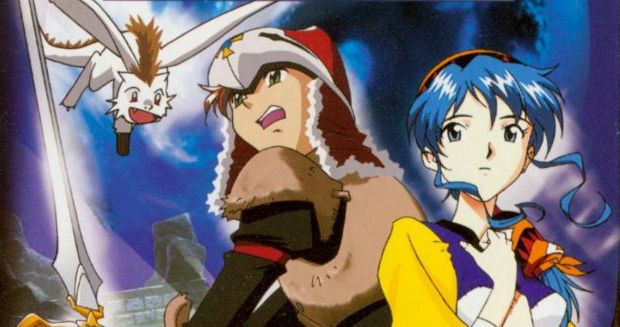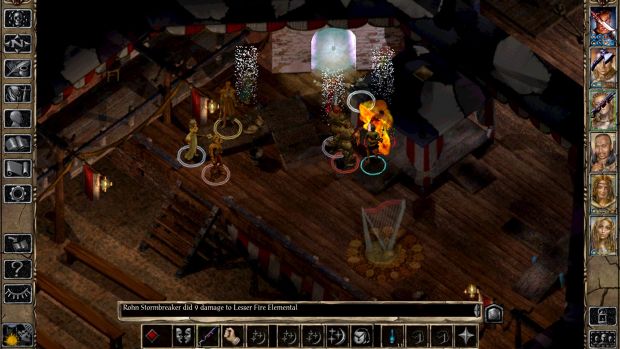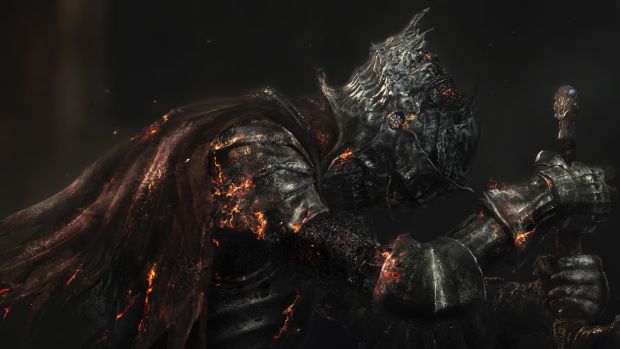
Many, many years ago when we were still simple boys and girls, Computer Gaming World did an extensive feature on genres in video games. One key issue focused on role playing games and noted that they were perhaps the most difficult genre to create a compelling game for. Almost two decades later and that hasn’t really changed. Final Fantasy 15 took nearly a decade and a rebranding to finally release. Developing a compelling MMORPG, whether it’s a shared world shooter like Destiny or a swords and sorcery epic like Guild Wars 2, takes an enormous amount of time and resources. Even a single expansion in your typical action RPG takes years to release as Reaper of Souls releasing two years after Diablo 3 would indicate.
But where did it all begin? Role playing games didn’t suddenly materialize into existence. Square Enix, Bethesda Softworks, Atlus, Blizzard Entertainment, Bioware and even Game Freak didn’t just become some of the best RPG developers overnight. So how did it happen?
"So influential was Ultima that it would actually play a role in how console RPGs like Dragon Quest were made."
The genesis of role playing games happened across two major fronts – the United States and Japan. In the 1970s, dungeon crawler rogue-likes running on university computers with Unix were the earliest of RPGs. Though Dungeons and Dragons debuted in 1974 as a popular pen and paper role playing series for tabletop groups, Dungeon in 1975-76 would attempt to translate that formula into a computer space. It didn’t take long for other dungeon-type titles like Orthanc in 1978 and Avathar (1979) running on the PLATO mainframe system to follow suit. By 1980, RPGs began taking cues from text-based adventures and evolving their stories. Akalabeth: World of Doom, which later gave rise to the Ultima series, and Wizardry are perhaps the best examples.
In fact, it wouldn’t take long for Ultima creator Richard Garriott to build the series into an RPG juggernaut. Ultima III: Exodus in 1983 is thought to be the first modern computer RPG. By Ultima IV: Quest of the Avatar, Western RPGs were already incorporating chivalry and morality systems while exploring complex social issues. So influential was Ultima that it would actually play a role in how console RPGs like Dragon Quest were made.
Wizardry took a different route and pioneered a different point of view, quite literally. It adopted a first person perspective and in Wizardry IV, you could actually play as the main antagonist.
Meanwhile in Japan, the RPG industry was busy creating a number of different computer RPGs. One of the earliest was Koei’s The Dragon and The Princess released in 1982 for the PC-8001. It managed to combine text-based adventure elements with tactical turn based combat. Tactical RPGs owe a lot to Bokosuka Wars from Koji Sumii since it was the first game to really blend strategy with role playing (and a bit of action as well). Nobunaga’s Ambition from Koei would further build off this trend in 1983 by introducing management elements and grand strategy (like Risk or even Hearts of Iron).
"Western RPGs weren’t slouching during the late 80s and early 90s. Might and Magic had debuted in 1986 with The Secret of the Inner Sanctum while Strategic Simulations introduced Pool of Radiance, a tactical RPG, in 1988."
However, Nihon Falcom’s Dragon Slayer arguably made the biggest impact. Released in 1984, it was the first action RPG in the world allowing players to traverse into dungeons and hack and slash monsters to bits. Tower of Druaga, which also released at the same time, is considered the other side of the action RPG coin and together, both games would influence an entire generation of games like The Legend of Zelda and Ys. Dragon Slayer’s success would continue in 1985 with Dragon Slayer 2: Xanadu which became a best seller on PC at the time. It was one of the first games to incorporate a karma meter which would keep track of the heinous acts that players committed. Dragon Slayer would eventually influence two major JRPG franchises in the coming years, namely Final Fantasy and Dragon Quest.
Franchises like Dragon Slayer and Hydlide would continue their dominance through the 80s while other developers like Arsys Software would introduce innovative titles like Star Cruiser, combining FPS, flight sim and RPG elements into a package with 3D graphics. 1986 brought Enix’s Dragon Quest to the forefront and along with featuring easier to understand systems, the classic princess to be rescued and non-linear gameplay, it introduced emotional storytelling and side quests that no longer felt isolated from main missions. The success of Dragon Quest at the time was so insane that people would skip school and their jobs to acquire a copy on launch day, forcing the government to place restrictions on the overall timing and location of its release.
Squaresoft was around, creating RPGs like Genesis: Beyond the Revelation in 1985, Cruise Chaser Blassty in 1986 and Cleopatra no Mahou in 1987 but it hadn’t quite made its mark on the industry just yet. Atlus had entered the fray with Digital Devil Story: Megami Tensei in 1987, bringing a more science-fiction horror element to JRPGs while also incorporating a monster-catching feature. Sega also debuted Phantasy Star in late 1987 and would be one of the few games at the time to feature a female hero. Final Fantasy debuted in the same year and became one of the two pillars of JRPGs for years to come. It introduced a number of tropes like character creation, the ability to travel with different vehicles like airships and the classic turn-based battle interface where enemies would appear on the left and party members appeared on the right of the screen. The success of Final Fantasy was such that it was enough to save Squaresoft from bankruptcy.
Western RPGs weren’t slouching during the late 80s and early 90s. Might and Magic had debuted in 1986 with The Secret of the Inner Sanctum while Strategic Simulations introduced Pool of Radiance, a tactical RPG, in 1988. Interplay was also batting high with hit releases like The Bard’s Tale and Wasteland (which would shape Fallout in the coming decade). Stormfront Studios brought one of the earliest examples of an MMO to gaming with Neverwinter Nights in 1991.

"The JRPG juggernaut was only just getting started though. Final Fantasy VII raised the bar for the genre with its production values, cinematics, and hours of gameplay spread across multiple discs."
While Japanese RPGs would begin to truly thrive from the 90s onwards, Western RPGs started to decline. Higher development costs led to increased delays and other genres like flight sims and RTS games would offer strong competition. JRPGs were also offering strong competition due to the dawn of console RPGs. Dragon Quest IV was introducing chapter-based stories while Final Fantasy III introduced the Job system allowing players to further customize their classes. Other titles like Final Fantasy Adventure (which led to Secret of Mana), Shin Megami Tensei, Metal Max, Breath of Fire, The Legend of Zelda: A Link to the Past, Fire Emblem, Star Ocean and Dragon Quest VI were dominating in the console RPG market. That domination would transcend new boundaries when Final Fantasy VII released for the PlayStation One in 1997.
This isn’t to say that Western RPGs were dead. System Shock, despite its lack of initial success, saw great critical acclaim in 1994, offering perhaps the best combination of FPS/RPG gameplay. Blizzard would unleash Diablo in 1996, throwing in procedurally generated levels, addictive hack and slash elements and loot-driven gameplay with minimal story elements. Interplay was still doing great with the release of awesome games like Fallout and Fallout 2, both developed by Black Isle Studios.
Planescape: Torment in 1999 also avoided the D&D infused games of the time by offering some of the best writing in an RPG yet. Dungeons and Dragons weren’t gone by a long shot though – a little known company called Bioware had been building up its reputation with Baldur’s Gate and its expansion Tales of the Sword Coast. Sadly, Interplay would eventually close down, resulting in the cancellation of Black Isle’s Torn.
The JRPG juggernaut was only just getting started though. Final Fantasy VII raised the bar for the genre with its production values, cinematics, and hours of gameplay spread across multiple discs. It introduced a whole new generation of gamers to Final Fantasy and would serve as one of Squaresoft’s biggest properties till this very day. The PlayStation One quickly became a premier destination for the best Japanese RPGs. Squaresoft introduced SaGa Frontier in 1997, Xenogears in 1998 and subsequent Final Fantasy titles like Final Fantasy VIII, IX and Tactics to the console. Other classics like Parasite Eve 2, Persona 2, Alundra, Suikoden, and Star Ocean would also see success.

"Nintendo was making waves during this period, though the loss of Final Fantasy to Sony did it no favours. The developer still managed to deliver some excellent RPGs…"
Sega wasn’t exactly sitting out the JRPG war, though it had a significantly smaller presence than in the Genesis days. It had already showcased its ability to create compelling RPGs for the Sega Saturn like Panzer Dragoon Saga and Shining Force III. With the Dreamcast in 2000, it took its Phantasy Star series online, introducing the first console MMO in history with Phantasy Star Online. Other subsequent RPGs like Skies of Arcadia and Game Arts’ Grandia 2 would dazzle fans on the Dreamcast though it was clear very quickly that Sega’s console wouldn’t be long for this world.
Nintendo was making waves during this period, though the loss of Final Fantasy to Sony did it no favours. The developer still managed to deliver some excellent RPGs – The Legend of Zelda: Ocarina of Time on the Nintendo 64 is considered one of the best games of all time. Other titles like Ogre Battle 64, Harvest Moon 64, Paper Mario and so on would showcase the developer’s RPG chops. However, its Game Boy platforms were doing far better as far as RPGs were concerned. Not only did the old Game Boy receive some awesome Zelda titles but it played host to Pokémon which released in 1998 and sparked an insane craze worldwide. Nintendo’s success with RPGs only continued when the Game Boy Advance released in 2001. Titles like Castlevania, Golden Sun, Mario & Luigi, Final Fantasy Tactics Advance, Summon Night, Lunar Legend and so on helped drive the GBA’s 81.5 million sales.
Squaresoft merged with Enix in 2003 but still remained a major player in the JRPG market with the PlayStation 2 era. Final Fantasy X arrived in 2001 and Final Fantasy XI in 2002 would be the developer’s attempt at creating an MMO within its vaunted universe. Final Fantasy X-2 in 2003 would break convention from the series and become the first real sequel to an established universe. During this time, other games like Shin Megami Tensei 3: Nocturne, Shadow Hearts and Dragon Quest VIII would showcase the power of the PS2’s RPG line-up. It also didn’t hurt that the platform received the Kingdom Hearts series, Dark Cloud and Dark Chronicle, Valkyrie Profile, Odin Sphere and an endless barrage of Shin Megami Tensei titles (including the awesome Persona 3 and 4), Disgaea, XenoSaga and honestly? The list just keeps going.
A special note on the massively multiplayer RPGS, especially on PC: They weren’t exactly at their peak. Ultima Online was compelling but littered with bugs. Nonetheless, it was the first of its kind in 1997 – Richard Garriott pretty much coined the term – and attracted a strong following. That would be until Sony Online Entertainment (now Daybreak Game Company) stole many a gamer’s heart and soul when it released Everquest in 1999.
"Going back to Western RPGs, it’s safe to say they had seen better days. All was not lost though. Bioware cranked out Baldur’s Gate 2: Shadows of Amn in 2000 and followed it up with an incredible expansion in 2001 with Throne of Bhaal."
There wouldn’t be too many MMOs that really captured the collective attention of the masses through a fair number of them like Asheron’s Call, Lineage, Runescape (despite its hardcore fan base that exists even till today) did have a decent impact. Even Star Wars Galaxies found a pretty good audience in 2003 but nothing could quite beat World of Warcraft when it debuted in 2004.
Going back to Western RPGs, it’s safe to say they had seen better days. All was not lost though. Bioware cranked out Baldur’s Gate 2: Shadows of Amn in 2000 and followed it up with an incredible expansion in 2001 with Throne of Bhaal. It then turned its sights to reviving Neverwinter Nights in 2002 and offering a strong set of tools for players to create their own worlds and D&D-like scenarios. From here, it was plain to see that Bioware would become a staple in the RPG industry. The developer’s ability to deliver detailed worlds with amazing characters and writing was fully realized with Star Wars: Knights of the Old Republic in 2003. The bridge between D&D and action RPG was still maintained but Bioware was beginning to transition towards a more character-driven style of gameplay with a heavy emphasis on action. This style of gameplay would define the developer’s games over the next decade starting with Jade Empire in 2005 and thus building its two most successful franchises: Mass Effect and Dragon Age Inquisition.
Another key player was Bethesda. The developer had shown its potential with Daggerfall in 1996 but took things to a whole new level with The Elder Scrolls III: Morrowind in 2002. The large expansive world, ability to create and customize one’s character as they saw fit and the ability to pretty much do anything would establish Bethesda’s RPGs as some of the best. The Elder Scrolls IV: Oblivion in 2006 took the franchise to even greater heights, only eclipsed by The Elder Scrolls V: Skyrim in 2011. In the interim, Bethesda had purchased the Fallout franchise from Interplay and released Fallout 3 in 2008.
Obsidian Entertainment also rose up during this time frame and would develop Star Wars: Knights of the Old Republic 2 and Neverwinter Nights 2 for Bioware, Fallout: New Vegas for Bethesda, Dungeon Siege III and eventually brought out an original IP with Alpha Protocol in 2010. The developer would eventually make its mark again in 2015 with Pillars of Eternity. As time went by, Western RPGs would see an amazing range of titles. Perhaps the most well known was The Witcher which began in 2007, attained true success with The Witcher 2: Assassins of Kings in 2011 and The Witcher 3: Wild Hunt in 2015.
"Whatever may happen in the years to come, there will always be a new legion of role players set to take up their digital swords and/or guns to fight the good fight."
There would be a resurgence of computer RPGs in this era as well with games like Divinity: Original Sin, Wasteland 2, Shadowrun Returns, Shadowrun: Hong Kong and XCOM. Even Diablo made a return in 2012 with Diablo 3 – though the game only really became great with Reaper of Souls in 2014. Other Diablo clones quickly gained popularity, most notably Torchlight and Path of Exile. The Borderlands franchise took that style into the first person shooter genre with great results. The Deus Ex franchise, which debuted in 2000, was revived in 2011 with Deus Ex: Human Revolution.
Japanese RPGs would see a decline of sorts around 2008, most notably due to the underwhelming Final Fantasy XIII series and the initial failure of Final Fantasy XIV. Other titles didn’t exactly excite players either, despite solid efforts like The World Ends With You. It also didn’t help that titles like Final Fantasy Versus XIII faced numerous delays. Pokémon, Tales of Vesperia, Monster Hunter Tri, Ni no Kuni and Valkyria Chronicles found their supporters but during this period, it was about Fallout, Mass Effect, The Elder Scrolls and World of Warcraft. The JRPG industry did manage to bounce back thanks to Xenoblade Chronicles and the Dark Souls franchise. In fact, From Software’s hack and slash titles had gained a handsome following from Demon’s Souls release on the PS3.
What’s next for the RPG industry? We’re still seeing titles like Tokyo Mirage Sessions and Fire Emblem Fates from Japan while Final Fantasy XV is due to release in September. Some of the most popular RPGs in this day and age are online including Destiny, Tom Clancy’s The Division, World of Warcraft and Guild Wars 2. The future seems fairly bright with Mass Effect Andromeda, Deus Ex: Mankind Divided, Persona 5, Torment: Tides of Numenara, The Bard’s Tale IV and much more.
Role playing games have had their ups and downs throughout their years. They’re still some of the toughest games to develop but they also present some of the most memorable stories and tales of heroism. Whatever may happen in the years to come, there will always be a new legion of role players set to take up their digital swords and/or guns to fight the good fight.

















